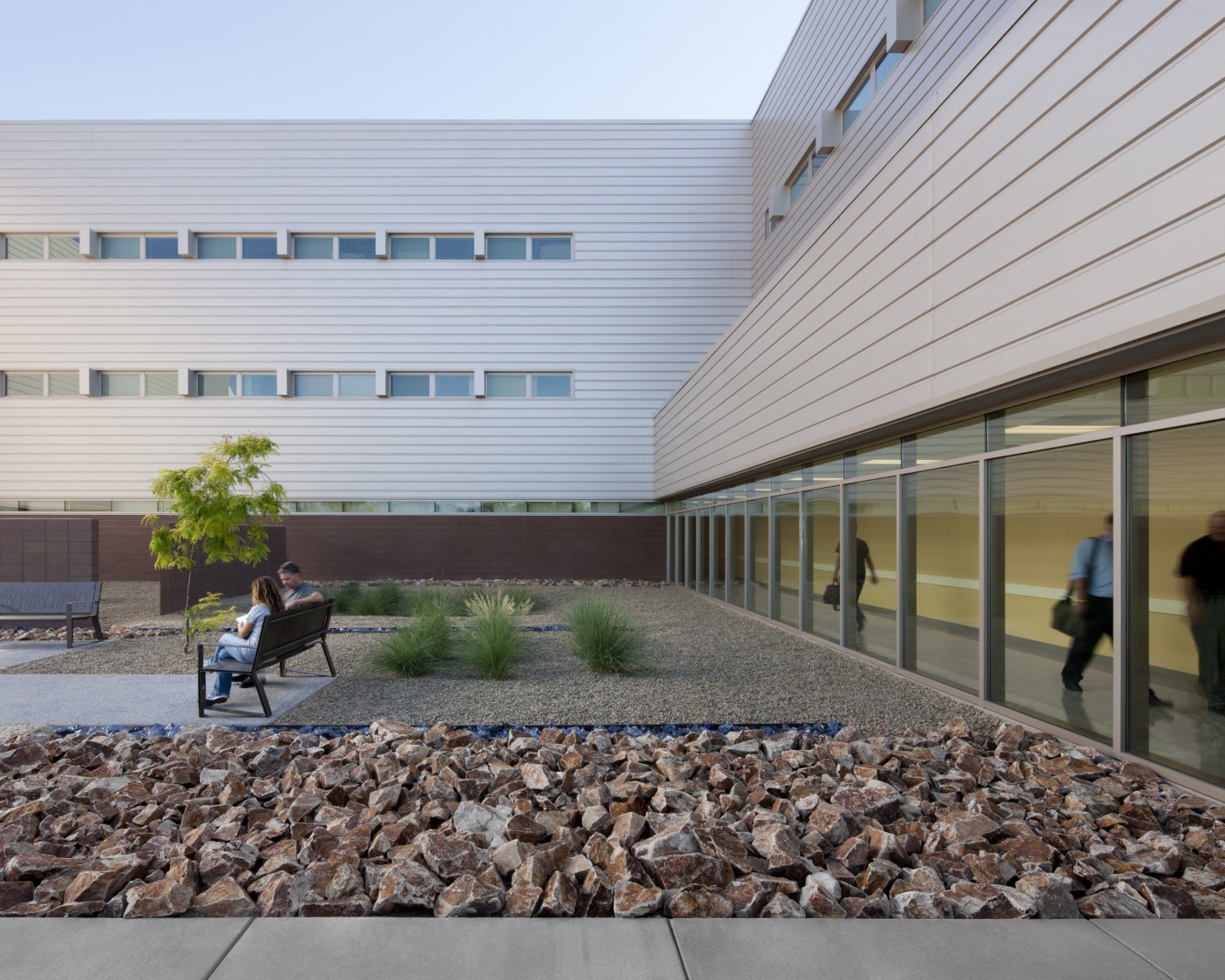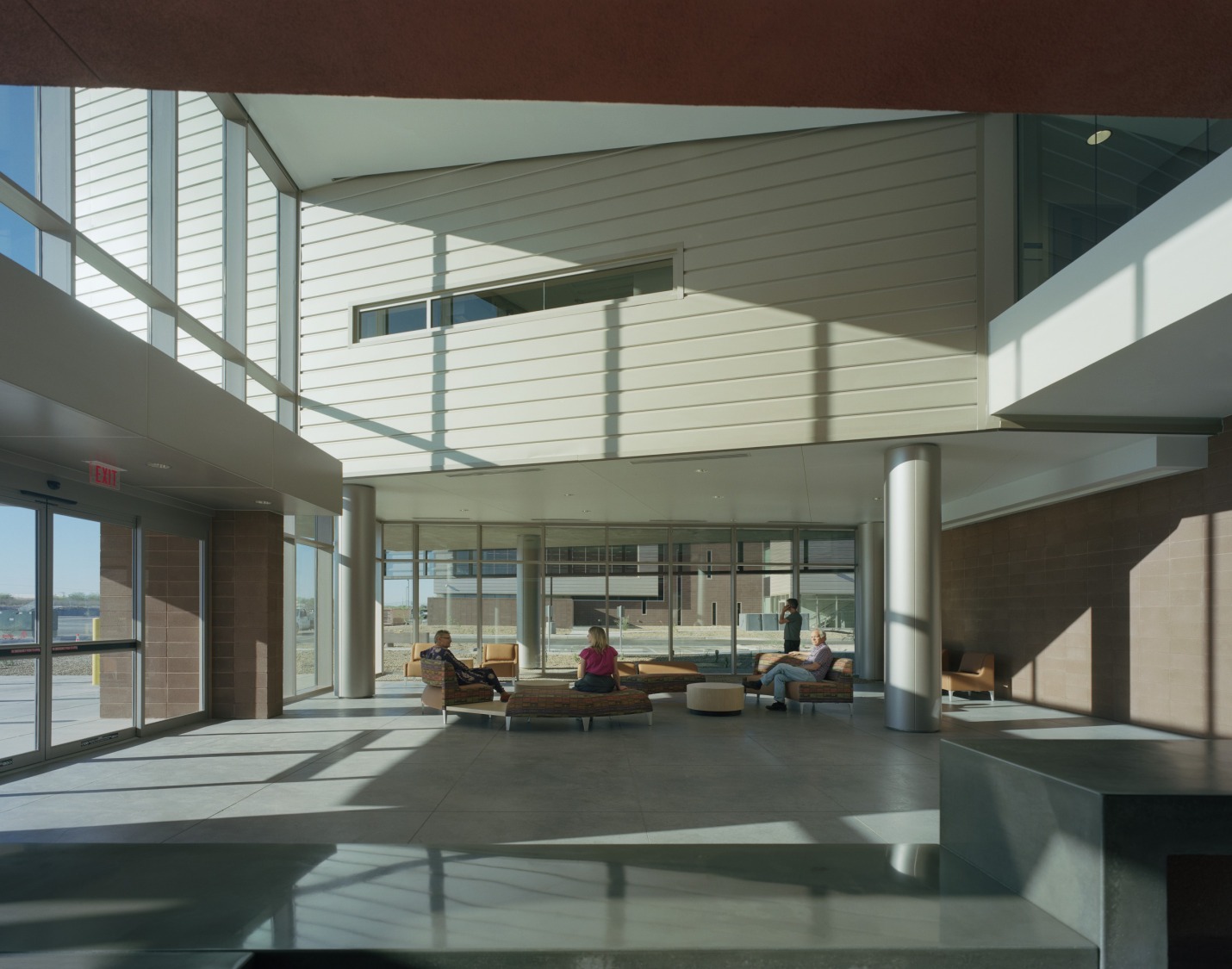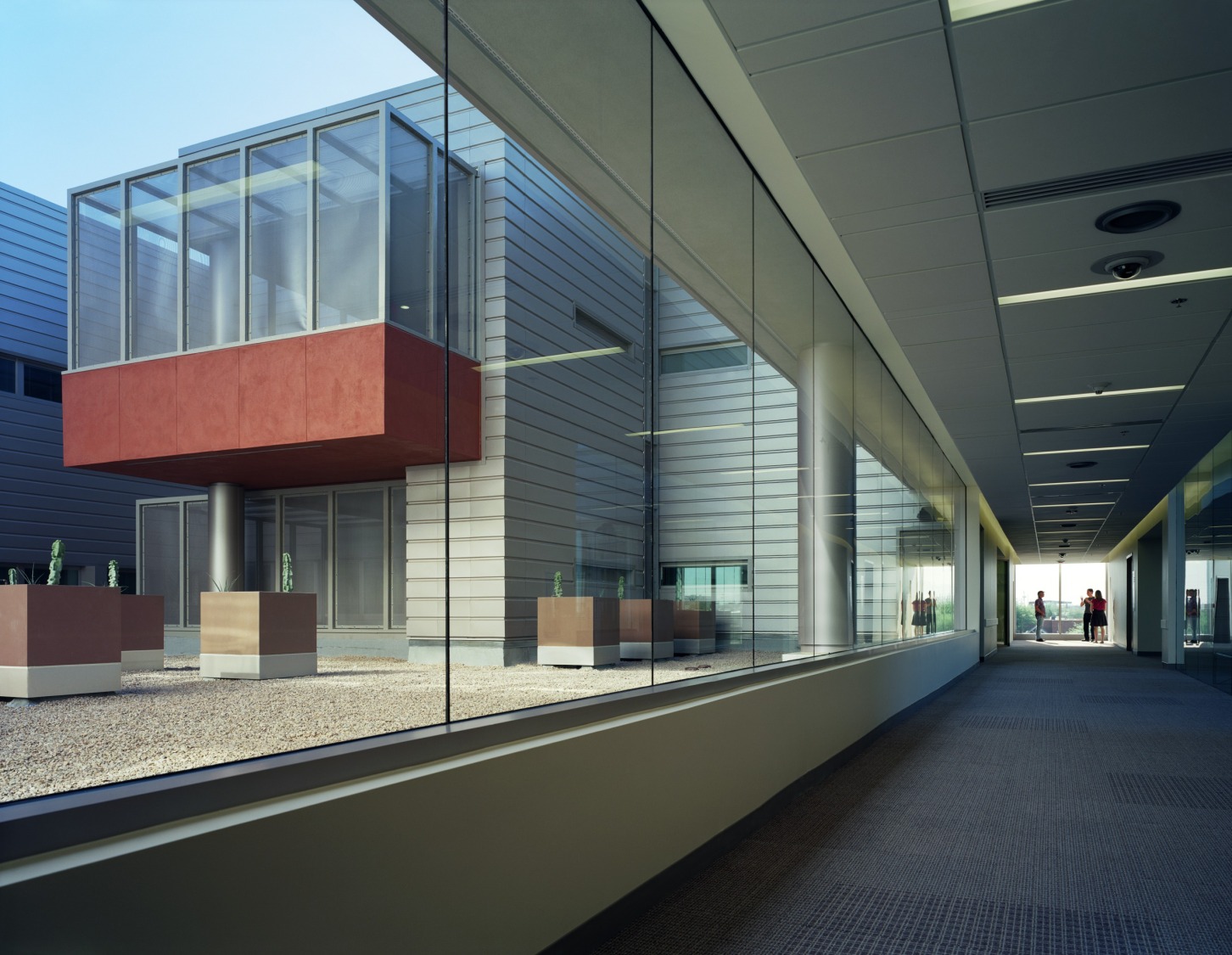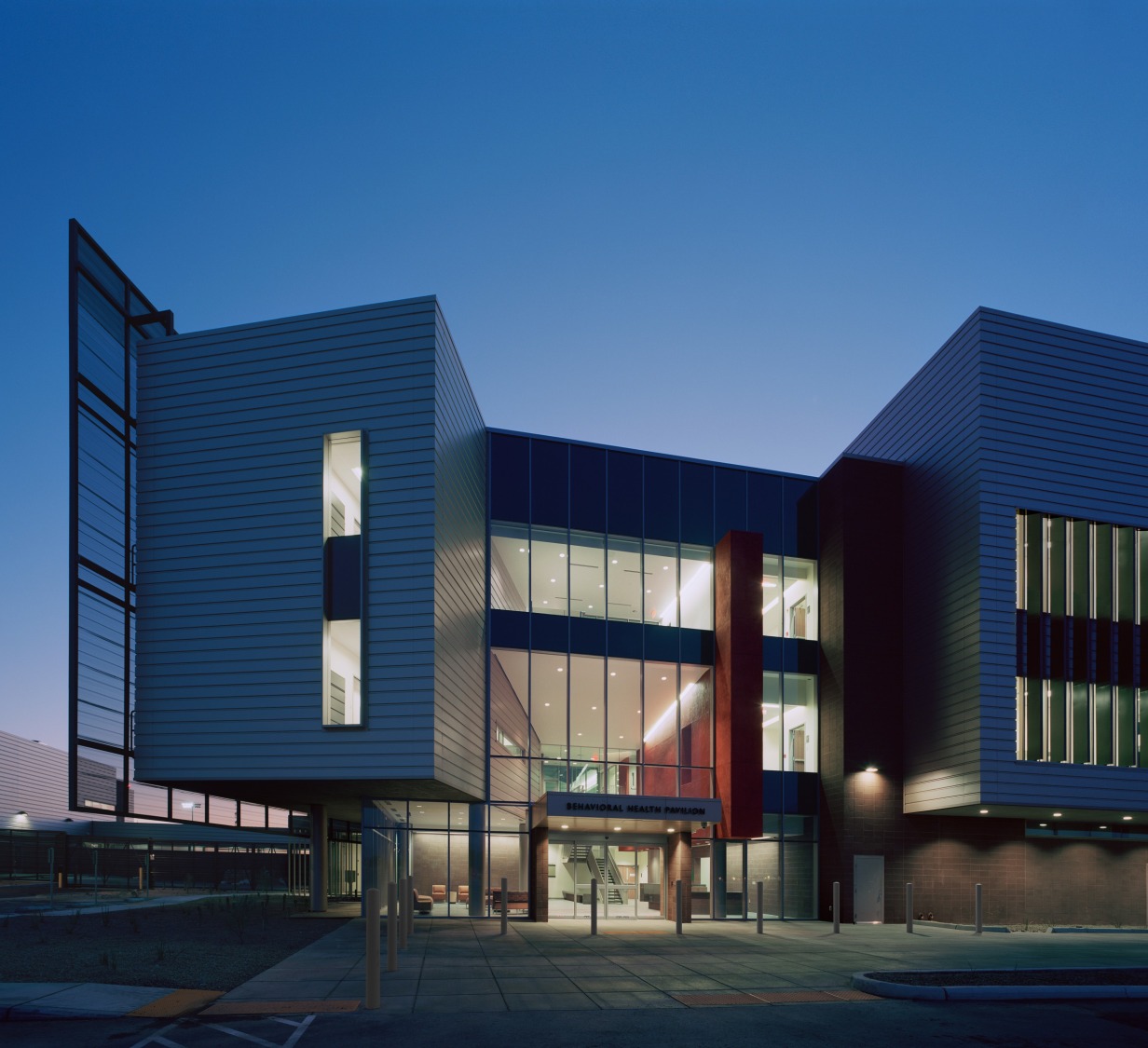A one-stop destination for mental and behavioral health treatment and recovery
The Banner-University Medical Center South, Behavioral Health Pavilion and Crisis Response Center is changing the practice of behavioral healthcare. Composed of two interrelated buildings that operate symbiotically to respond to the broadest range of patient needs, the center’s one-stop shop approach to treatment and recovery includes a secure 96-bed psychiatric hospital, a county courtroom, and a Crisis Response Center. This creates a complex, yet highly organized arrangement of program and circulation networks that are carefully planned to effectively separate patient, staff, visitor, and court-related traffic flows.
Organized around a shared sallyport, the facility provides a secure circulation zone for staff, law enforcement, courtroom personnel, and patient transfers. Patient and support spaces orient dedicated staff, patients, and visitors along an east/west axis for optimal sun control. Responding to the harsh, but inspiring Arizona landscape, the architectural vocabulary features a thirty-foot deep overhang that alludes to cliff dwellings indicative of the ancient civilizations of the southwest. Promoting healing and well-being, access to shaded outdoor gardens provided on all levels creates opportunities for patients, visitors, and staff. Ultimately, the symbiotic relationship between the two buildings fosters a normalized patient environment that balances the safety and security requirements of mental health care with the clinical goal of creating an environment that promotes healing and rehabilitation.







